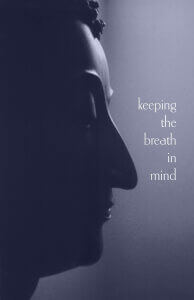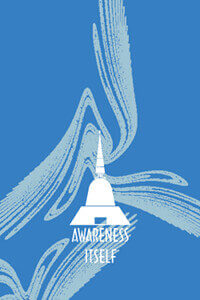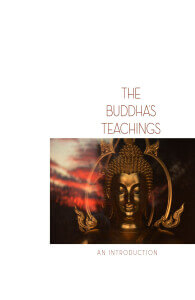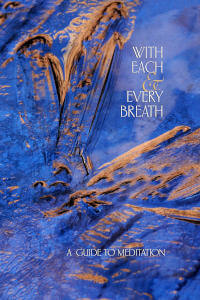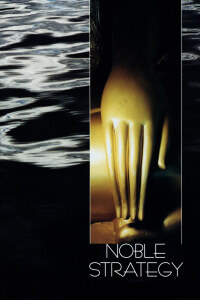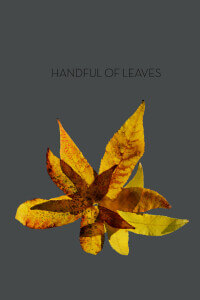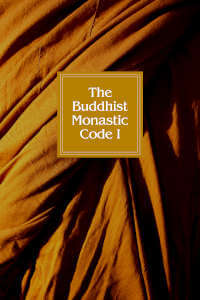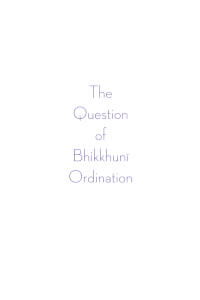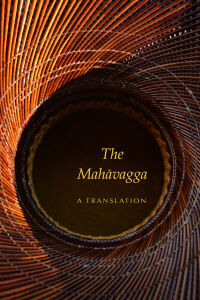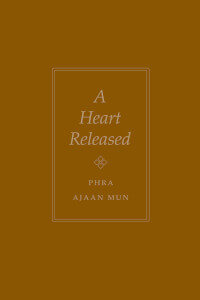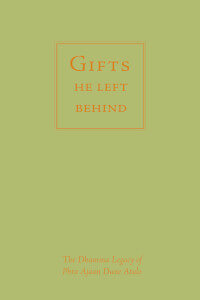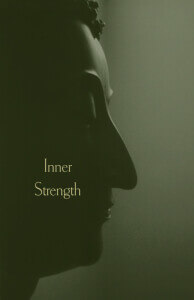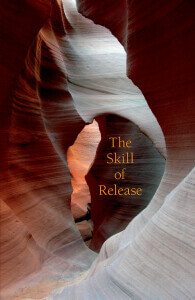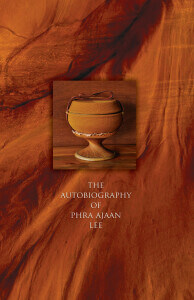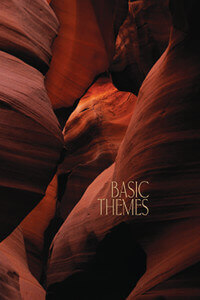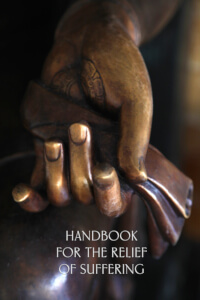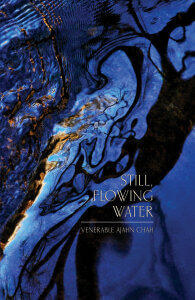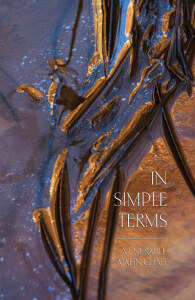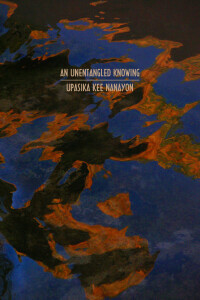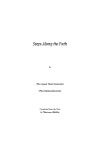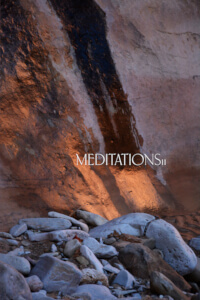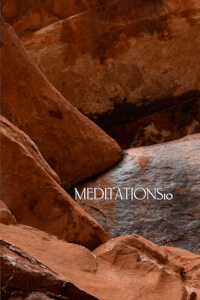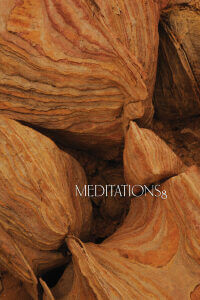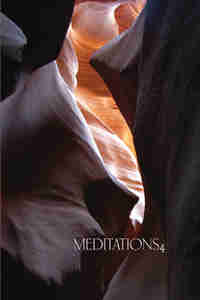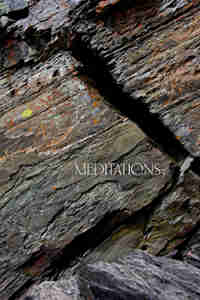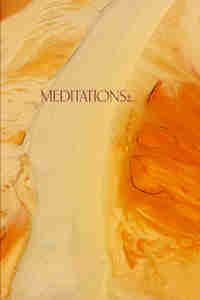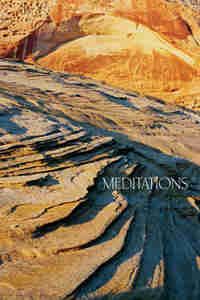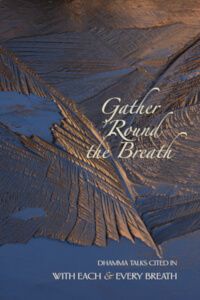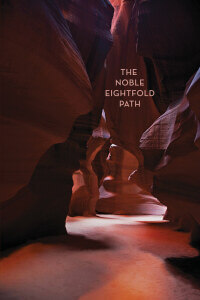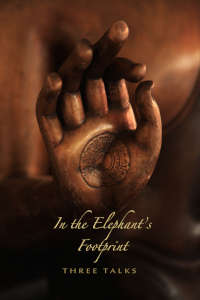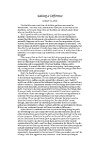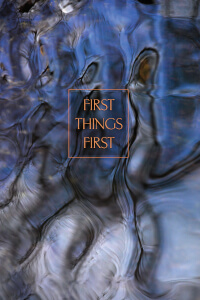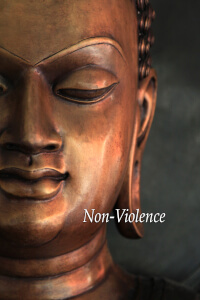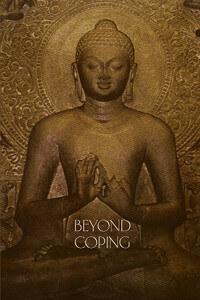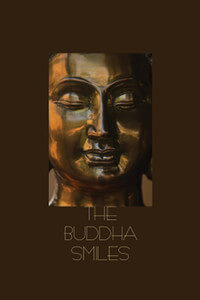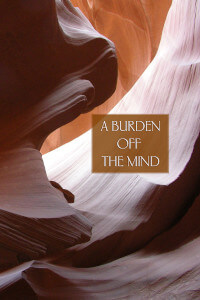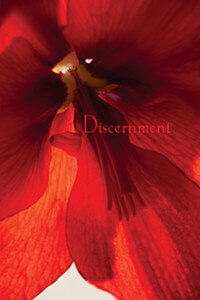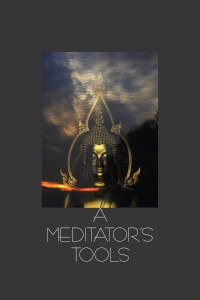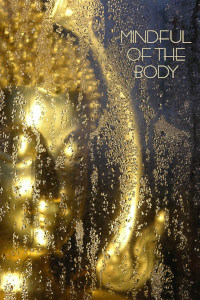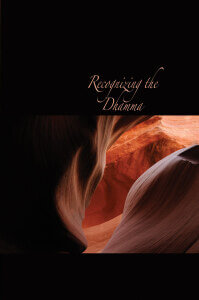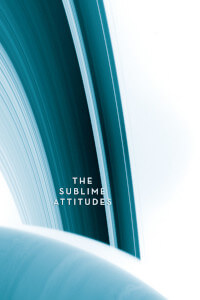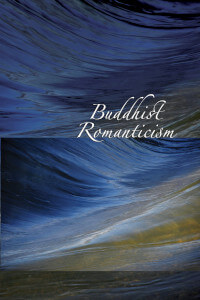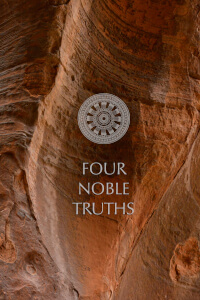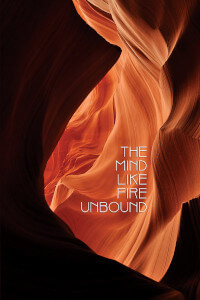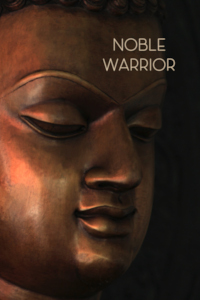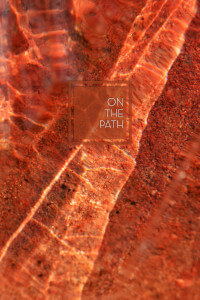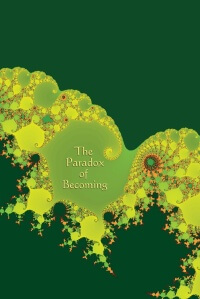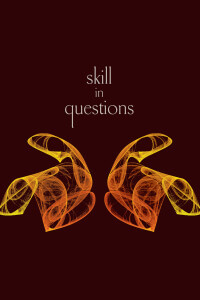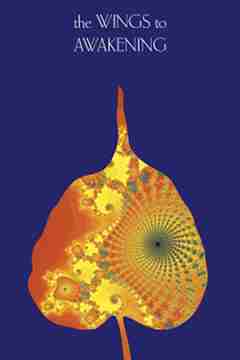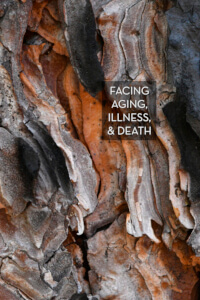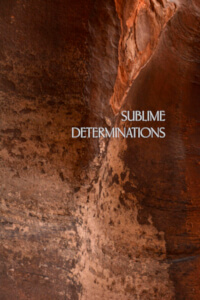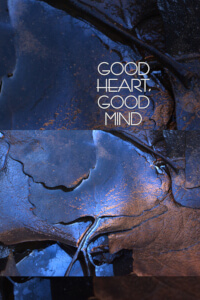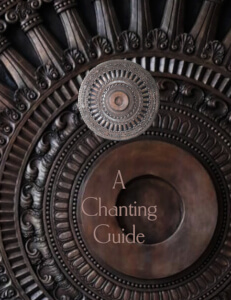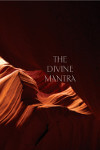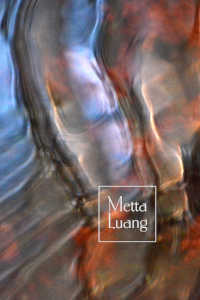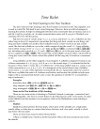Books
-
(published November 13, 2025) A transcript of a ten-day retreat in Provence held in April, 2025 on the topic of the skillful use of desire on the path of Buddhist practice. -
(published July 26, 2025) Answers to sixteen basic questions on the topic of not-self, plus readings from the Pali Canon on which the answers are based. -
(published January 19, 2025) Ven. Sāriputta once proposed introducing the Buddha’s teachings to intelligent foreigners by saying, “Our teacher teaches the subduing of desire and passion.” This book explores the implications of taking this sentence as a starting point for understanding the Dhamma.
So as not to get lost among the seven dozen plus books available on this page, this ‘Featured’ section highlights the introductory and essential books that are introduced in the ‘For Beginners’ section on the home page.
-
A fundamental guidebook for breath meditation and practicing the jhānas. -
Awareness Itself, by .
A collection of teachings spanning the whole range of practice by Ajaan Lee’s principal student and Ṭhānissaro Bhikkhu’s teacher. -
A short introduction to the basic concepts and values underlying Buddhist practice, with special attention to clearing up common misinterpretations about what the Buddha taught. -
(revised June 3, 2021) A breath meditation manual by Ṭhānissaro Bhikkhu drawing on two sources: the Buddha’s own set of instructions on how to use the breath in training the mind, and Ajaan Lee Dhammadharo’s method of breath meditation — which builds on the Buddha’s instructions, explaining in detail many of the points that the Buddha left in condensed form. -
Noble Strategy, by .
This first collection of essays is recommended for new practitioners. -
(revised Feb. 13, 2021) This is a revised edition to the second collection of essays. Significant changes were made to the essay ‘Perennial Issues,’ and Pāli diacritics were added throughout. -
Karma Q & A, compiled by .
(revised Feb. 21, 2021) Kamma and rebirth are often understood to be teachings of fate and helplessness in the face of unknowable influences from the past. Instead of teaching fate, The Buddha’s teachings on kamma and rebirth are empowering, showing how people can develop skills in the present that will lead to the end of suffering. So, to help show how valuable these teachings are, here’s a set of answers, based on the Pāli Canon, to some questions frequently asked about these topics.
Handful of Leaves: an Anthology from the Sutta Piṭaka, translated by .
-
The Buddhist Monastic Code, Volumes I & II, translated and explained by .
(revised Sept. 10, 2025) This two-volume set attempts to give an organized, detailed account of the Vinaya training rules and the traditions that have grown up around them. The Pāṭimokkha training rules as explained in the Suttavibhaṅga are the topic of the first volume; the rules found in the Khandhakas, the topic of the second. -
(revised Dec. 17, 2021) A complete collection of Ṭhānissaro Bhikkhu’s writings since 2009 on the validity of recent attempts to reinstitute bhikkhunī ordination. ((There is no printed version of this ebook.)) -
A translation, side-by-side with the original Pāli, of one of two books from the Vinaya Piṭaka explaining the rules and protocols concerning the daily life of the Saṅgha. ((There is no printed version of this ebook.)) -
The Bhikkhu and Bhikkhuni Pāṭimokkhas, essays on Vinaya issues, and translations of the Vinaya Piṭaka.
A Heart Released: The Teachings of Phra Ajaan Mun, translated by .
Come & See, by .
-
A fundamental guidebook for breath meditation and practicing the jhānas. -
In this collection of talks Ajaan Lee covers the sorts of questions that occur to people new to meditation. -
An introduction to the Buddhist practice of training the heart. -
Inner Strength & Parting Gifts: Talks by Ajaan Lee Dhammadharo, translated by .
A collection of 20 Dhamma Talks by , from the basics of breath meditation to longer talks with extended metaphors on consciousnesses, knowledge and the defilements. -
The Heightened Mind: Dhamma Talks of Ajaan Lee Dhammadharo, translated by .
In previous collections of Ajaan Lee’s talks, the main focus has been on technique. Here the focus is more on attitudes to bring to the practice of concentration. -
The Skill of Release: Teachings of Ajaan Lee Dhammadharo, translated by .
A selection of Ajaan Lee’s teachings, including a few full talks, some short passages, and sometimes even half-thoughts, if they seemed provocative enough. Although the passages presented here have been arranged so that the book will stand on its own, they are also meant to fill in some of the gaps left by Ajaan Lee’s other writings. -
The Autobiography of Phra Ajaan Lee, translated by .
Phra Ajaan Lee Dhammadharo was one of the foremost teachers in the Thai forest ascetic tradition of meditation founded at the turn of the twentieth century by Phra Ajaan Sao Kantasilo and Phra Ajaan Mun Bhūridatto. -
Craft of the Heart, by .
Ajaan Lee’s first, this book is also his most comprehensive, covering all aspects of the path of practice, from taking the five precepts to the attainment of arahantship. Although his later books made further developments in the positions offered here — such as the treatment of breath meditation in Keeping the Breath in Mind — this book remains one of the best introductions to Ajaan Lee’s teachings as a whole. ((There is no printed version of this ebook.)) -
Frames of Reference, by .
A practical explanation for meditators of the four frames of reference from the Satipaṭṭhāna Sutta. ((There is no printed version of this ebook.)) -
Uniquely among the ajaans in the Thai Wilderness tradition Ajaan Lee composed systematic treatises on the practice. These are valuable documents, giving a wilderness perspective on basic Dhamma topics. ((There is no printed version of this ebook.)) -
(published January 13, 2023) A Handbook for the Relief of Suffering consists of three short essays that were meant to be given to hospital patients as food for thought for them to ponder while undergoing treatment. ((There is no printed version of this ebook.))
-
Straight from the Heart: Thirteen Talks on the Practice of Meditation, by and translated by .
The talks in this collection all deal with the practice of meditation, and particularly with the development of discernment. These talks were originally given for the benefit of a follower of Venerable Ācariya Mahā Boowa who had contracted cancer of the bone marrow and had come to practice meditation at Wat Pa Baan Taad in order to contend with the pain of the disease and the fact of her approaching death. -
Things as They Are: A Collection of Talks on the Training of the Mind, by and translated by .
These talks were originally given to the monks at Venerable Ācariya Mahā Boowa’s monastery in Thailand. They deal in part with issues particular to Buddhist monks, but they also contain much that is of more general interest. Since the monks being addressed were at different stages in their practice, each talk deals with issues on a variety of levels. Thus there should be something of use for every reader interested in the training of the mind.
Awareness Itself, by .
-
In 1989 Ajaan Suwat, the founder of Metta Forest Monastery, guided a meditation retreat for Westerners at Insight Meditation Society in Barre, MA. -
A collection of Dhamma talks published to commemorate Ajaan Suwat’s 100th birthday.
-
Still Flowing Water: Eight Dhamma Talks, by and translated by .
A collection of eight new or significantly revised translations of Ajahn Chah’s Dhamma talks by Ṭhānissaro Bhikkhu. Two of them have never been translated before into English, and four of them are based on entirely new Thai transcriptions of the best and most complete source recordings available. -
In Simple Terms: 108 Dhamma Similes, by and translated by .
Ajahn Chah was a master at using the apt and unusual simile to explain points of Dhamma. The translations of these similes have been polished as little as possible, for their unpolished nature is precisely what reveals unexpected layers of meaning. -
It’s Like This: 108 Dhamma Similes, by and translated by .
Ajahn Chah was a master at using the apt and unusual simile to explain points of Dhamma. He was especially talented at exploiting the open-ended nature of the simile - using a particular image to make one point in one context, and a very different point in another.
An Unentangled Knowing: The Teachings of a Thai Buddhist Lay Woman, by and translated by .
-
(published May 28, 2024) Transcribed Dhamma talks on breath meditation and various aspects of the Buddhist Path given by Ṭhānissaro Bhikkhu during the evening meditation sessions at Metta Forest Monastery primarily from 2022-2023. -
(published June 6, 2022) Transcribed Dhamma talks on breath meditation and various aspects of the Buddhist Path given by Ṭhānissaro Bhikkhu during the evening meditation sessions at Metta Forest Monastery primarily from 2020-2021. -
(published Feb. 13, 2021) Transcribed Dhamma talks on breath meditation and various aspects of the Buddhist Path given by Ṭhānissaro Bhikkhu during the evening meditation sessions at Metta Forest Monastery primarily from 2018-2019. -
Transcribed Dhamma talks on breath meditation and various aspects of the Buddhist Path given by Ṭhānissaro Bhikkhu during the evening meditation sessions at Metta Forest Monastery from 2015-2018. -
(revised Feb. 13, 2021) Transcribed Dhamma talks on breath meditation and various aspects of the Buddhist Path given by Ṭhānissaro Bhikkhu during the evening meditation sessions at Metta Forest Monastery from 2014-2016 primarily. -
(revised Feb. 13, 2021) Transcribed Dhamma talks on breath meditation and various aspects of the Buddhist Path given by Ṭhānissaro Bhikkhu during the evening meditation sessions at Metta Forest Monastery from 2012-2015. -
Transcribed Dhamma talks on breath meditation and various aspects of the Buddhist Path given by Ṭhānissaro Bhikkhu during the evening meditation sessions at Metta Forest Monastery from 2009-2011. -
(revised Feb. 13, 2021) Transcribed Dhamma talks on breath meditation and various aspects of the Buddhist Path given by Ṭhānissaro Bhikkhu during the evening meditation sessions at Metta Forest Monastery from 2006-2009. -
Transcribed Dhamma talks on breath meditation and various aspects of the Buddhist Path given by Ṭhānissaro Bhikkhu during the evening meditation sessions at Metta Forest Monastery from 2004-2008. -
Transcribed Dhamma talks on breath meditation and various aspects of the Buddhist Path given by Ṭhānissaro Bhikkhu during the evening meditation sessions at Metta Forest Monastery from 2001-2005. -
Transcribed Dhamma talks on breath meditation and various aspects of the Buddhist Path given by Ṭhānissaro Bhikkhu during the evening meditation sessions at Metta Forest Monastery from 2000-2005. -
Transcribed Dhamma talks on breath meditation and various aspects of the Buddhist Path given by Ṭhānissaro Bhikkhu during the evening meditation sessions at Metta Forest Monastery from 1996-2003.
-
-
(revised June 3, 2021) A collection of 115 Dhamma Talks. A companion volume to Ṭhānissaro Bhikkhu’s introduction to breath meditation, With Each & Every Breath, presenting in sequence all of the talks referenced in it. ((There is no printed version of this ebook.)) -
A series of 13 Dhamma talks describing the Buddha’s Path of practice. -
Six talks addressing the most neglected of the teachings that the Buddha said were central to maintaining his message. ((There is no printed version of this ebook.)) -
Three Dhamma talks, given at Wat Palelai in Singapore, on the need to put the four noble truths ahead of the three characteristics when making merit, practicing concentration, and developing discernment. ((There is no printed version of this ebook.)) -
The seven factors for awakening (bojjhanga) are a set of qualities explaining how right view helps to develop right mindfulness into right concentration. -
(published Oct. 13, 2025) Transcriptions of Dhamma talks from 1995-2007 whose recording quality was too poor to be put in the evening talks archive. ((There is no printed version of this ebook.)) -
Dhamma talk transcriptions are also available from the evening talks page. You also might want to use the new search function on the site.
-
Noble Strategy, by .
This first collection of essays is recommended for new practitioners. Includes: Affirming the Truths of the Heart, Karma, The Road to Nirvana Is Paved with Skillful Intentions, The Healing Power of the Precepts, Right Speech, Trading Candy for Gold, A Guided Meditation, The Path of Concentration & Mindfulness, One Tool Among Many, What Is Emptiness?, No-self or Not-self?, and The Image of Nirvana. -
(revised Feb. 13, 2021) This is a revised edition to the second collection of essays. Significant changes were made to the essay ‘Perennial Issues,’ and Pāli diacritics were added throughout. The essays included are: Life Isn"t Just Suffering, Opening the Door to the Dhamma, Questions of Skill, Freedom from Fear, Samsara, Samsara Divided by Zero, The Agendas of Mindfulness, De-perception, The Weight of Mountains, Five Piles of Bricks, Perennial Issues, and When You Know for Yourselves. -
Purity of Heart, by .
The third collection of essays by Ṭhānissaro Bhikkhu. Includes: Purity of Heart, Faith in Awakening, Untangling the Present, Pushing the Limits, All About Change, The Roots of Buddhist Romanticism, Right & Wrong Reconciliation, Getting the Message, Educating Compassion, Jhana Not by the Numbers, The Integrity of Emptiness, A Verb for Nirvana, The Practice in a Word. -
This is a revised edition to the fourth collection of essays. Significant changes were made to the essay ‘Mindfulness Defined,’ and Pāli diacritics were added throughout. The essays included are: The Lessons of Gratitude, No Strings Attached, The Power of Judgment, Think like a Thief, Strength Training for the Mind, Mindfulness Defined, The Joy of Effort, Head & Heart Together, The Wisdom of the Ego, Ignorance, Food for Awakening, The Buddha via the Bible, and Freedom from Buddha Nature. -
This fifth collection of essays includes: Beyond All Directions, Lost in Quotation, An All-around Eye, Metta Means Goodwill, On Denying Defilement, Virtue Without Attachment, The Limits of the Unlimited Attitudes, The Essence of the Dhamma, The Middles of the Middle Way, and The Arrows of Thinking. -
Noble & True, by .
(revised Feb. 13, 2021) This sixth collection of essays includes: Danger Is Normal, What’s Noble about the Noble Truths?, Truths with Consequences, We Are Not One, Under Your Skin, Silence Isn’t Mandatory, The Not-self Strategy, and The Buddha’s Last Word. -
First Things First, by .
(revised Feb. 13, 2021) The seventh collection of essays. The essays included are: Honest to Goodness, Did the Buddha Teach Free Will?, In the Eyes of the Wise, First Things First, The Karma of Now, The Streams of Emotions, Worlds & Their Cessation, Wisdom over Justice, All Winners, No Losers, How Pointy is One-pointedness?, The Limits of Description, and The Names for Nirvana. -
A short explanation of the Buddha’s teachings on the topic of insight and how those teachings should be strategically applied in practice. -
Along the Way, by .
(published Jan. 21, 2022) The eighth collection of essays: Safety in a Duality, Dhamma Is What Dhamma Does, Becoming a True Person, Happiness as a Skill, Wise Enough to Care, An Arrow in the Heart, Meditators at Work, Unhindered at Death, Clinging & the End of Clinging, The Buddha’s Rx, The Logic of Not-self, and The Dhamma Eye. -
(published April 1, 2024) The ninth collection of essays: The Heart a Flowing Stream, Everywhere & Always, At War with the Dhamma, Free the Dhamma, Mindfulness to the Fore, Thinking about Jhāna, Fun & Games, Perception, Just Right as It Is, and Neither Here nor There. -
Essays by Ṭhānissaro Bhikkhu that have appeared in various Buddhist publications, but which have not yet been included in a collection.
-
Non-violence: A Study Guide Based on Early Buddhist Teachings, translated and with an introduction by .
Passages from the Pāli Canon on the topic of putting an end to the causes of conflict and violence. -
(revised Feb. 21, 2021) A study guide with readings from the Pali Canon addressing aging, illness, death and separation. -
An analysis of the style and function of humor in the Pāli Canon along with translated passages from the Canon. -
A Burden off the Mind, compiled by .
A study guide on the five khandhas (aggregates) emphasizing the importance of bringing the right questions to the teachings on the khandhas. ((There is no printed version of this ebook.)) -
(revised May 13, 2023) The path of practice that takes you to nibbāna is rooted in skillful desires. ((There is no printed version of this ebook.)) -
This study guide is an introduction to the Buddha’s teachings on how to use discernment to find an unending happiness. -
For your practice to lead to Awakening, you must develop reliable standards for judging — which practices lead to stream entry, what indicates a true experience of it, and what its necessary results are. -
A Meditator’s Tools, compiled by .
This is a study guide on the ten recollections, a set of meditation themes that highlight the positive role that memory and thought play in training the mind. -
(revised Feb. 13, 2021) The practice of merit (puñña) is often discounted by western Buddhists, yet the Buddha warns that higher levels cannot be practiced safely without merit as the foundation. -
Early Buddhism teaches that the body can be used to develop mindfulness and concentration, which in turn can be used to free the mind of its attachments to the body. Then the mind and body can live in peace. ((There is no printed version of this ebook.)) -
(published May 4, 2023) A study guide on the ten ideal topics of conversation among meditators listed in the Pali Canon. ((There is no printed version of this ebook.)) -
The Buddha taught eight principles for recognizing what qualifies as Dhamma and Vinaya, and what does not. -
The sublime attitudes (brahmaviharas) are the Buddha’s primary heart teachings—the ones that connect most directly with our desire for true happiness. They’re the qualities of heart that motivated the Buddha to find awakening and then to teach the path of awakening to others. At the same time, they function as part of the path itself. -
For people in the modern world facing the issue of how to practice the Dhamma in daily life, the ten perfections provide a useful framework for how to do it. ((There is no printed version of this ebook.))
-
A short introduction to the basic concepts and values underlying Buddhist practice, with special attention to clearing up common misinterpretations about what the Buddha taught. -
An in-depth study of the pervasive influence of early Romantic thought in shaping the way Buddhism is taught in the West, and of the practical consequences of following the Romantics rather than the Buddha in approaching the problem of suffering and stress. -
(revised May 20, 2023) An introduction to the Buddha’s central teaching, the four noble truths, explaining them in the context of the Buddha’s statements about truth in general, and as the context for all his other teachings. -
Karma Q & A, compiled by .
(revised Feb. 21, 2021) Kamma and rebirth are often understood to be teachings of fate and helplessness in the face of unknowable influences from the past. Instead of teaching fate, The Buddha’s teachings on kamma and rebirth are empowering, showing how people can develop skills in the present that will lead to the end of suffering. So, to help show how valuable these teachings are, here’s a set of answers, based on the Pāli Canon, to some questions frequently asked about these topics. -
Western Buddhists have usually understood the Buddha’s metaphor of nibbana (Sanskrit, nirvana) as “extinguishing” or “extinction”. This book, which includes an essay and readings from the Pāli Canon, examines ancient Indian theories on the mechanics of fire in order to understand the Buddha’s metaphor in its original context. -
(revised Feb. 13, 2021) A biography of the Buddha using passages collected exclusively from the Pāli Canon. The translated passages are interspersed with a minimum of explanation, allowing the compilers of the Canon to speak for themselves. -
(revised Feb. 13, 2021) A well-rounded picture of the noble eightfold path for people who are interested in taking guidance from the earliest extant records of the Buddha’s teachings on how to reach the end of suffering and stress. -
Although “becoming” is one of the most important concepts in the Buddha’s teachings, there is no full-scale treatment of it in English. This book attempts to fill that lack. -
(revised cover art Jan. 12, 2023) A short introduction to the basic principles of Buddhism. Included are readings drawn from the earliest Buddhist texts and essays explaining aspects of the Triple Refuge that often provoke questions in those who are new to the Buddha’s teachings. -
(revised Feb. 13, 2021) For the past several decades, a growing flood of books, articles, and teachings has advanced theories about the practice of mindfulness which are highly questionable and—for anyone hoping to realize the end of suffering—seriously misleading. The main aim of this book is to show that the practice of mindfulness is most fruitful when informed by the Buddha’s own definition of right mindfulness and his explanations of its role on the path. -
An explanation of dependent co-arising through the analogy of feeding and pulling from the vocabulary of complex, non-linear systems. -
(revised Feb. 13, 2021) This is a treatise about discernment in action, centered on the Buddha’s strategic use of discernment in framing and responding to questions. -
A short treatise explaining that the Buddha did not teach the doctrine of rebirth because he was blindly following the cultural norms of his time. Instead, our resistance to this teaching is pointing to cultural biases of our own that impede progress on the Path. -
(published August 26, 2022) How lessons drawn from the Buddha’s awakening can give guidance in how best to deal with the big problems of life: aging, illness, death, grief, and giving care to those who are sick or dying. -
(revised Feb. 13, 2021) The 37 Wings to Awakening were the Buddha’s own summary of his teachings. This book contains sutta translations organized by topic with relevant discussion by the author. -
(revised June 3, 2021) A breath meditation manual by Ṭhānissaro Bhikkhu drawing on two sources: the Buddha’s own set of instructions on how to use the breath in training the mind, and Ajaan Lee Dhammadharo’s method of breath meditation — which builds on the Buddha’s instructions, explaining in detail many of the points that the Buddha left in condensed form.
-
(published July 7, 2024) A transcript of a retreat sponsored by Le Refuge in April, 2023. -
(published July 13, 2022) A transcript from a retreat held in conjunction with the Sociedade Vipassana de Meditação of Brasília on the topic of the four sublime attitudes (brahmavihāras): unlimited goodwill, unlimited compassion, unlimited empathetic joy, and unlimited equanimity. ((There is no printed version of this ebook yet.)) -
(revised Sept. 2, 2020) A series of talks given at two retreats—one in France, the other in Brazil—on the topic of the ten perfections (pāramī): giving, virtue, renunciation, discernment, persistence, endurance, truth, determination, goodwill, and equanimity. These perfections provide an excellent framework for understanding how to give meaningful and satisfying purpose to everyday lay life in a way that’s conducive both to genuine goodness and to genuine happiness. As they develop, they foster qualities both of a good mind—wise in understanding cause and effect—and a good heart: purposeful, well-intentioned, and strong. -
A series of talks on the topic of the five faculties (indrīya): conviction, persistence, mindfulness, concentration, and discernment. The talks were given at a nine-day retreat at Le Refuge in May of 2017. -
(revised Feb. 21, 2021) A series of talks on the relationship between the two central Buddhist concepts of karma (kamma) and mindfulness (sati). The talks show how the Buddha’s teachings on kamma—far from being irrelevant to the practice of mindfulness—actually provide the essential ground for understanding how mindfulness best functions in developing the mind for the purpose of putting an end to suffering and stress. The series of talks was given on an eight-day retreat at Le Refuge, a Buddhist group located in Auriol, near Marseille, France. -
(revised Feb. 21, 2021) A series of eight talks on anatta, or not-self, given at a ten-day retreat in Provence, France. Also there are relevant selections from the Pāli Canon at end of the book.
-
(revised cover art July 9, 2021) This expanded version includes dozens of additional chants. Audio (.mp3) recordings by the monks of Mettā Forest Monastery of a number of chants are available on the chanting page. -
The Divine Mantra, by .
The Divine Mantra is a chant on the six properties that brings benefits to those who memorize and recite it, inasmuch as it deals directly with matters that exist in each of us, since, once we are born, we all dwell in the six properties. An audio recording of this chant is available from the chanting page, but it tracks the slightly different ordering of the Ajaan Fuang Version below. ((There is no printed version of this ebook.)) -
An audio recording of this version of the chant is available from the chanting page. ((There is no printed version of this ebook.)) -
(published November 7, 2024) A chant to aid in developing the sublime attitudes (brahmavihāras): limitless goodwill, compassion, empathetic joy, and equanimity. -
The tone rules for Pāli Chanting in the Thai Tradition reflect the tones of the Thai language when reading Pāli written in Thai script. This short guide supplements the Pāli pronunciation rules at the beginning of A Chanting Guide.

Printed Book Requests.
Notes on International Shipments. Please download the pdf from the link below and read the special instructions for international shipments.



